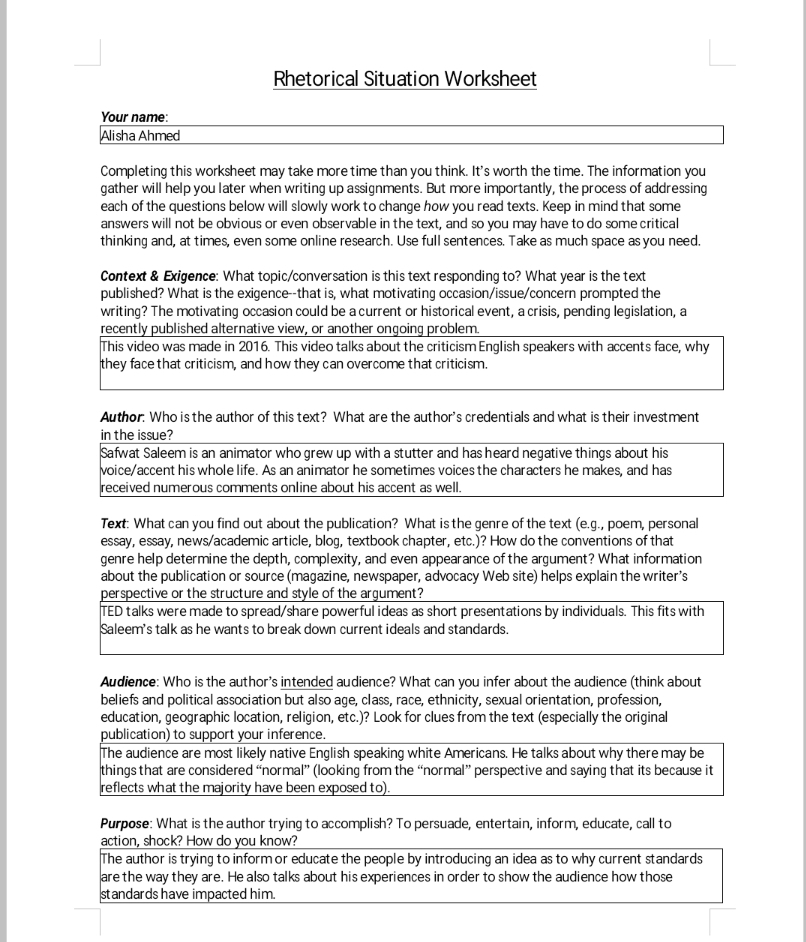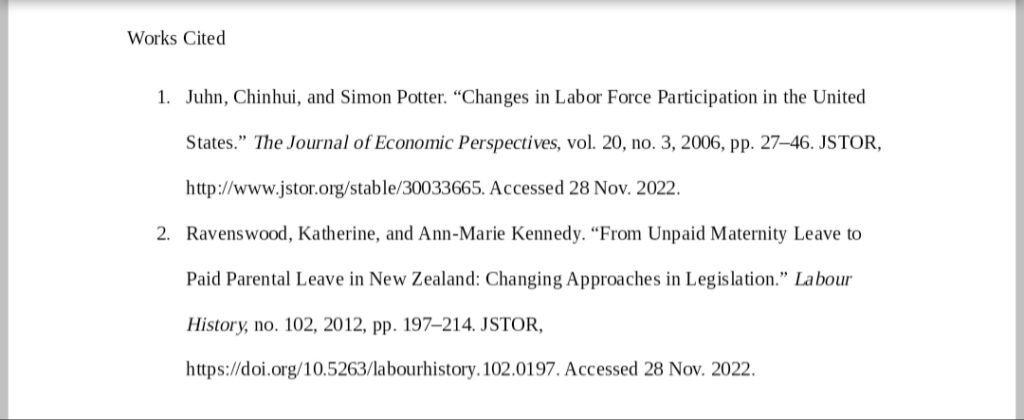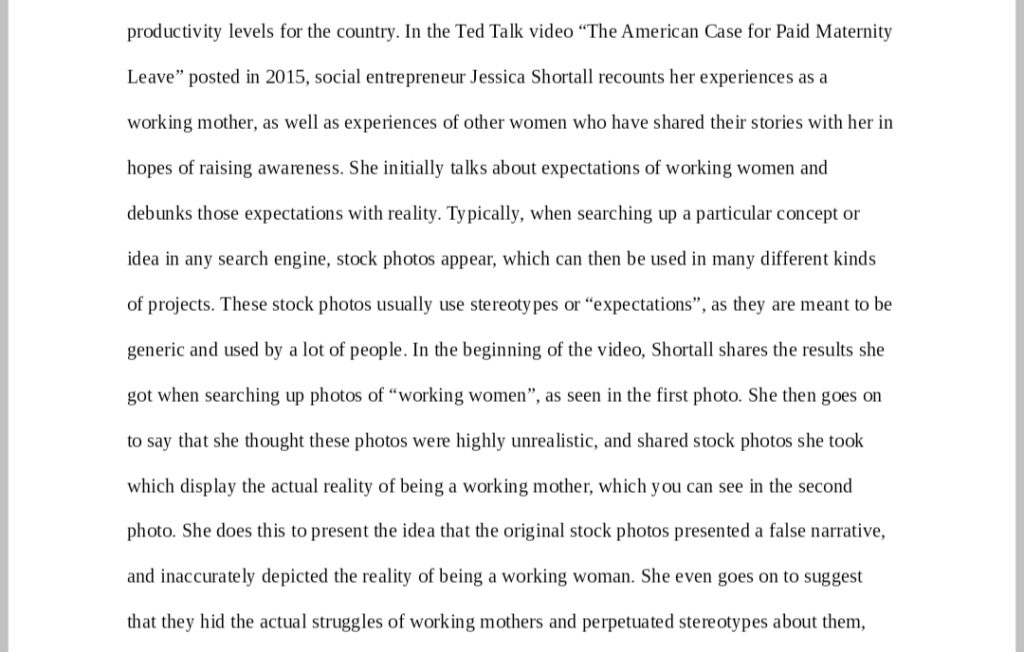Welcome to my English portfolio page. Here you’ll find my work for the major assignments from the English 110 course (known as “phases” and numbered accordingly). From the menu you’ll find these works, as well as cover letters describing my thoughts about them and other rough drafts/outlines. Below is a self-reflection about my growth as a writer and how this class has improved my reading and analysis skills, as well as how it helped shaped my thoughts and ideologies about language.
Throughout the semester I learned all sorts of rhetorical skills, but two things stuck out to me the most. The first was choosing how to convey an idea to the audience. Yes, this sounds like a basic skill that has been taught in nearly every English class, but I’m referring to the “writing style” or “language” of the work. When I was first presented with June Jordan’s “Nothing Mean More to Me”, as well as her background as an educator, I was surprised. I initially thought it would be a personal piece, something that writers would share in a journal for language enthusiasts, nothing too serious. While Jordan did share her experiences, she did something I didn’t expect: she shared the syntax of “Black English” and how it was used in her classroom (encouraged by her). Black English, and all other forms of “broken” english are pretty much considered dialects and not to be used in an educational setting. I never considered the possibility of using this english in such a setting because it was deemed “improper”, or “wrong”, and inferior to Standard English. With her piece, in my opinion, June Jordan, clearly demonstrated that there is no “wrong” way to speak English, and that not speaking Standard English doesn’t signify your intelligence. The students in her class were clearly bright, intelligent individuals who simply spoke another language. However, they were at a disadvantage in an environment dominated by racism, which not only impacted their education but other aspects of their lives. Amy Tan makes a similar point in her piece “Mother Tongue”. Her mother’s experience as a non-native, English-speaking American was very similar to the experiences of my parents and other relatives. Her own experience was relatable to me (as I’m sure it is to other first-generation college students as well). She recounts switching between the two “englishes” depending on audience and context; certain points are more defined in certain “englishes”. While this does relate to tone, I think this helps enhance it (and what I meant by “writing style”).Overall, to me, Tan clearly established two things: that spoken language is its own language, and that it is not a measure of a person’s intelligence as some native speakers (in any language) think it to be. This was probably the first class I’ve taken that I’ve seen share other forms of english in a non-negative light.
The second, more technical thing, that stuck with me is rhetorical analysis. While I did go over this in high school, I never really used in when writing argumentative pieces. It was easy enough when the sole purpose of the piece was to focus on analyzing texts and quotes, but it was a struggle for me when implementing it into the mentioned essays. Phase 3 in particular was where I had to choose a topic (which was mandating paid maternity leave in America), make an argument, and incorporate the rhetorical synthesis. I wasn’t sure when to stop “explaining” my reasons and how to seamlessly fit the analysis of the sources in while keeping the essay under the page limit. I’d say I did an alright job with it overall, but there’s definitely room for improvement. However, because of the practice in class, I know how the analysis should look like and what it should consist of, which puts me in a much better position than I was prior to this semester.
While it doesn’t dictate it, my growth as a writer can be measured by answering the following question: “To what extent have I achieved the course learning objectives this semester?” The first two objectives were already discussed in the paragraphs above: “Examine how attitudes towards linguistic standards empower and oppress language users”, and “Explore and analyze, in writing and reading, a variety of genres and rhetorical situations”. While I don’t feel as strongly towards the next objectives, I do think I have accomplished them somewhat. The third and fourth objective kind of go hand in hand: “Develop strategies for reading, drafting, collaborating, revising, and editing”, and “Recognize and practice key rhetorical terms and strategies when engaged in writing situations”. For each rhetorical text we read, we had to complete a rhetorical strategies handout, where we looked for the author’s purpose, credibility, writing strategy, etc. After doing this multiple times for various narratives, I gained a sense of what to look out for when reading certain texts and what to do when writing.


Learning objective five was to “Understand and use print and digital technologies to address a range of audiences”. I learned about a variety of ways to present information for certain purposes during this semester. Prior to this, I thought of using different medias as simply a way to “change up” assignments and increase variety. While I knew that certain medias were better for certain topics/situations, I never really put much thought into what I used. However, I’ve learned that different medias can emphasize different tones and be used in a variety of ways. For instance, a video can be used to keep the audience’s attention and provide a physical representation of the topic, whereas a presentation can be used for more formal topics or to help the audience engage in the presentation. I used a powerpoint presentation in phase 2 to get my point across and to present the information in a way so the audience gets the message without feeling bored or deterred by all the facts being thrown at them. In regards to learning objective six, which was to “Locate research sources (including academic journal articles, magazine and newspaper articles) in the library’s databases or archives and on the Internet and evaluate them for credibility, accuracy, timeliness, and bias”, a variety of resources was used for the researched essay, from scholarly articles to peer reviewed articles, etc. We learned the difference between the types of articles and how to determine which were credible, as well as where to find them. The trip to the computer lab helped immensely as we became more familiar with looking through academic websites like JSTOR or Google Scholar. This also ties into the eighth objective, to “Practice systematic application of citation conventions”. As you can see below, all sources are cited in MLA format. After using this format over and over, I’ve memorized it and am able to use it accordingly for future essays. A lot of sources also come from educational or academic websites like JSTOR.


My achievement of the last outcome, “Compose texts that integrate a stance with appropriate sources, using strategies such as summary, analysis, synthesis, and argumentation” can be seen in the researched essay as seen below.


Here, I cited a source in favor of my argument and analyzed the author’s purpose and argument. While it may not be the best analysis ever, it is definitely the best analysis I’ve done so far (but not the last). Like I mentioned earlier, I am determined to learn and grow as a writer. Overall, this class has improved my skills and knowledge about reading and writing rhetorical texts.

